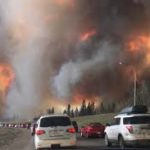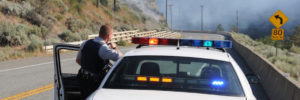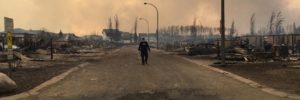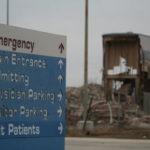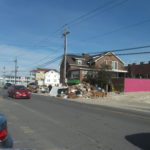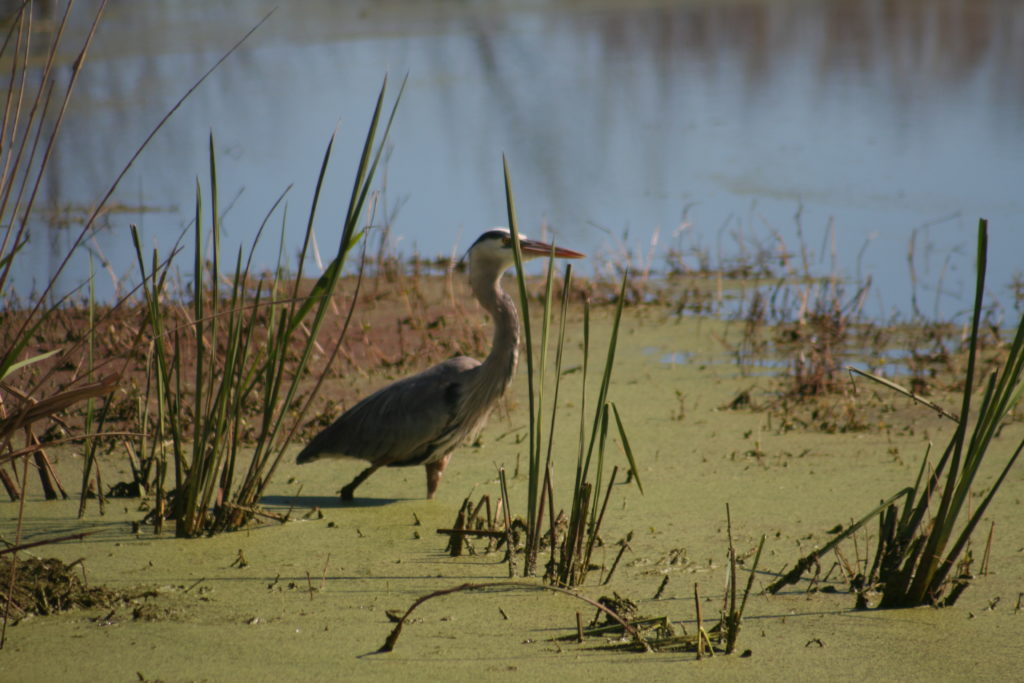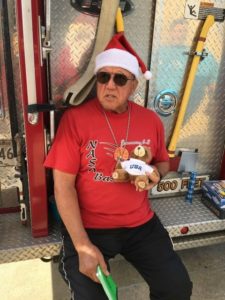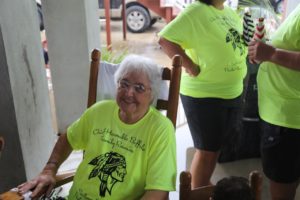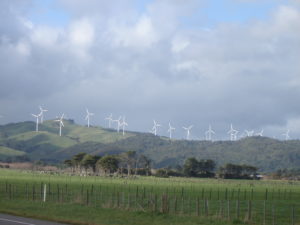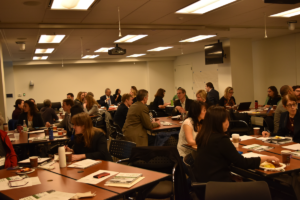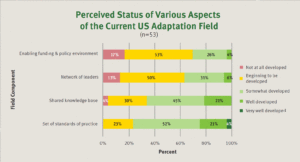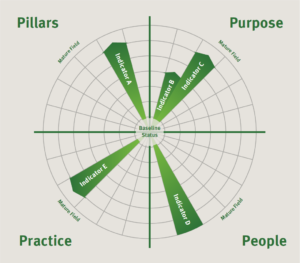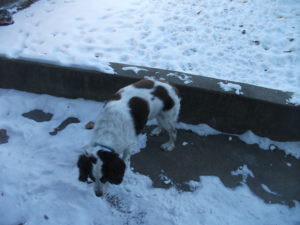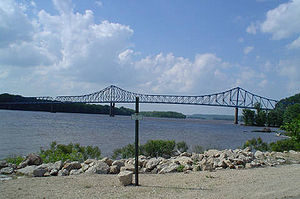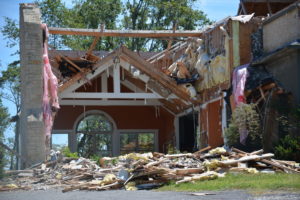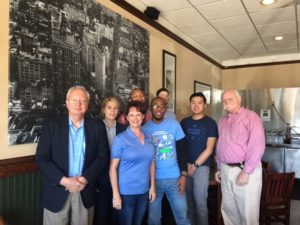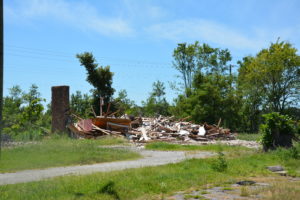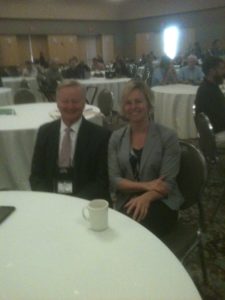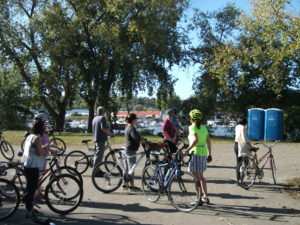Summarizing the major points from a densely factual book like Firestorm: How Wildfire Will Shape Our Future, by Edward Struzik (Island Press, 2018), is about as challenging as understanding precisely what is happening in the midst of a rapidly moving massive wildfire. While California is not the focus of Struzik’s book, I might note that confronting such fires in November, such as we have seen on the news in recent weeks, ought to prod more interest in the recent National Climate Assessment and similar climate change science. The wildfire season most decidedly used to be shorter in California, a point Gov. Jerry Brown has made repeatedly. Put more bluntly, it is time to drop the political knee-jerk reactions and study the findings.
In Firestorm, Struzik takes us north, much farther north. He starts his story by focusing on the utterly hellish nightmare of the May 2016 scene surrounding Fort McMurray, Alberta, during what became known as the Horse Fire, or among firefighters simply as “The Beast.” People with moderately long news memories may recall following this fire for several days and nights on television, as the fire swept through an area dominated by oil sands development, the heart of Canada’s energy sector. As Struzik notes, megafires (defined as exceeding 100,000 acres in size) are nothing new or unusual in the boreal forests of Canada and Alaska. Three fires bigger than The Beast had occurred in Canada since 1950.
Not so long ago in human history, however, the consequences would have seemed less catastrophic because of the lack of large human settlements in the area, which is not to say that such fires would not have affected native villages and smaller towns. But energy development has brought urban development, and Fort McMurray in 2016 was a city of 88,000 people. As the wildfire attacked and surged through the area, generating massive confusion, it destroyed an estimated 2,800 homes and buildings, burned nearly 1.5 million acres, and produced nearly $9 billion in total losses, including predicted insurance losses of $3.77 billion. The book does not state whether these are U.S. or Canadian dollars (worth about 10 percent less), but I am assuming U.S. given its publication in the states. Either way, it is a massive impact. It is certainly a staggering economic impact on a province like Alberta, home to such facilities as the Imperial Oil plant, which according to Struzik produces 220,000 barrels per day of the bitumen that helps fuel Canadian energy exports.
Much of Struzik’s book, which often starts chapters with quotes from Dante’s Inferno, tours us through the ground-level experience of the fire in and around Fort McMurray in early May 2016. We follow police who worry about family members evacuating, police who work door to door warning people to evacuate, hospital workers preparing for incoming casualties, and highways filled with bumper-to-bumper traffic including people in SUVs abandoning their vehicles in ditches after running out of gas, with the Royal Canadian Mounted Police (RCMP) ensuring that such people found alternative rides to safe destinations. Air tankers fly low over the fire to drop their loads of retardant, and helicopters scoop water from nearby lakes in 180-gallon buckets to disperse as strategically as possible. Wildfire response is no less sophisticated or expensive than in the U.S., although Struzik notes some Canadian pride in protecting firefighter safety and eschewing the “hotshot” approach that can lead to heroic but tragic deaths. He paints a realistic but deeply troubling portrait of the human elements of confronting a massive wildfire.
If such fires in the far north are not new, then what, if anything, is the impact of climate change? As has been pointed out many times, it is folly to link any one event directly to climate change, tempting though it may be for many people. The reality is more profound and concerning. Since the 1970s, in Canada, the area burned has doubled, with the prediction that it may double again by mid-century and possibly triple by 2100. In short, the connection to climate change is not any one fire, a natural phenomenon in a fire-adapted environment, but in increased frequency.
As California has learned, that frequency can also be abetted by a longer fire season, itself a product of climate change. Struzik explains the fire triangle, a combination of heat, dryness or low humidity, and oxygen. On May 3, 2016, the temperature around Fort McMurray was 91°F. The humidity was only 13 percent. For those unfamiliar with the boreal forest, it may be surprising to learn that such temperatures are not entirely unusual in the summer, even in Alaska, with much longer days than in southern latitudes, just as winter brings deeper freezes and very short days. It is a climate of extremes. But climate change is warming the far north faster than almost anywhere else, producing the loss of polar ice caps and the melting of glaciers. Montana, Struzik says, may see average temperatures rise by 5° F., and Montana has major wildfire issues already. Melting ice caps and glaciers are factors in sea level rise, which in turn affects major cities like New York and Miami much farther south, but Struzik notes that we are all connected in other ways to the fate of the northern forest. In a major wildfire like that in Alberta, air quality has been shown to suffer in places like Chicago because of the upper atmospheric drift of ashes and pollution. Northern Alberta may seem a world away, but it will never be distant enough to have no impact below the border.
Personally, I find the science behind all this intriguing, at all levels. Most people, for instance, may not know the origin of the term “firestorm,” which grew out of the cataclysmic 1871 wildfire in Peshtigo, Wisconsin, which took more than 1,500 lives, the deadliest in American history. The term refers to the behavior of lightning storms in pyrocumulonimbus clouds (aka pyroCBs), which involve an updraft “that sucks smoke, ash, burning materials, and water vapor” high into the sky. As these cool, they perform like classic thunder clouds. But a chemical reaction forestalls any rainfall, allowing the lightning strikes to stoke and expand the fire. The phenomenon remains a mystery and subject of intense study for meteorologists. It is also obviously terrifying and deadly for those beneath it.
Ultimately, in such a book, the question is what we are going to do about the problem. Both the U.S. and Canada have struggled to find appropriate ways to fund wildfire response and suppression, although it is clear also that more money needs to be directed to mitigation and preparation. Firefighting by itself is a completely futile approach. Struzik emphasizes a need in both nations to invest more in scientific research and in developing a “holistic plan” to deal with wildfires when they occur. The price of not developing a better approach, he says, includes the loss of clean water, of birds and animals who will lose their habitat as the problem intensifies, and the loss of jobs afforded by the forest environment. That research must inevitably account for the impacts of humanly generated climate change in coming decades, a task that should never be underestimated because, as one scientist notes in Struzik’s last chapter, keeping up with climate literature is like “drinking from a fire hose,” a curious metaphor in light of the problem. We must also be realistic. Nature has always provided for natural recovery because fire is a natural phenomenon, but it is the pattern of recovery that may change significantly in a changing natural environment.
Jim Schwab

